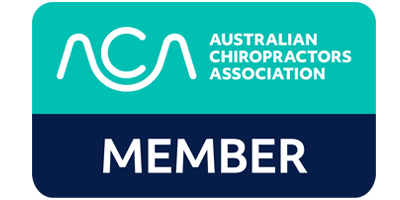Mastering the Art of Breathing Well: Techniques and Tips!

Breathing is fundamental to life, yet many of us overlook its importance in maintaining our overall well-being. Correct breathing technique not only ensures adequate oxygen intake but also promotes relaxation, reduces stress, and supports various bodily functions.
In this article, we’ll delve into the art of breathing, highlighting common mistakes, effective techniques for addressing specific issues, and essential tips for optimising your breathing.
#1 Chiropractic Adjustments Can Help Us Breathe Better!
Chiropractic adjustments can improve breathing mechanics, giving patients the increased chest expansion and flexibility they need to take in more air.
Studies published in the Journal of Manipulative and Physiological Therapeutics and the Chiropractic Journal of Australia revealed significant improvements in lung function, chest expansion, and respiratory muscle strength among individuals receiving chiropractic interventions targeting the mid-spine. These findings imply that chiropractic care may directly enhance breathing, providing a natural and effective approach to enhancing lung health.

Understanding Proper Breathing Technique
Before exploring more specific techniques and tips, let’s establish the foundation of optimal breathing.
Proper breathing involves deep, diaphragmatic breathing, where the diaphragm contracts downward, allowing the lungs to fully expand with each inhalation and deflate with each exhalation. This type of breathing maximises oxygen uptake and also promotes relaxation by engaging the parasympathetic (facilitates relaxation, resting and digestion) nervous system.
Common Mistakes in Breathing

1. Shallow Breathing: Breathing primarily into the chest without fully engaging the diaphragm.
2. Mouth Breathing: Habitually breathing through the mouth instead of the nose can lead to dehydration and disrupted sleep.
 3. Over-breathing: Taking rapid, shallow breaths, often associated with anxiety and hyperventilation.
3. Over-breathing: Taking rapid, shallow breaths, often associated with anxiety and hyperventilation.
4. Breath Holding: Holding the breath during moments of stress or physical exertion, leading to mental and muscular tension as well as reduced tissue oxygenation.
5. Reverse (Paradoxical) Breathing: Inhaling as the abdomen contracts and exhaling as it expands, disrupts the natural flow of breathing.
Belly Breathing and Training Exercise
Faulty breathing is one of the most common dysfunctions affecting the musculoskeletal system. Chest breathing can lead to overactivity of neck muscles, forward head posture as well as weakening our core – the spine stabilisation system.
 Sit or lie down comfortably. Put one hand on your chest and the other on your tummy. Take a deep breath. Your abdomen should move outwards and your chest stays motionless and relaxed. Exhale and your tummy should drop.
Sit or lie down comfortably. Put one hand on your chest and the other on your tummy. Take a deep breath. Your abdomen should move outwards and your chest stays motionless and relaxed. Exhale and your tummy should drop.
Breathe slowly, gently and relaxed. Inhale and exhale fully aiming for a full deep breath. Keep your shoulders down and relaxed.
Practice before you go to sleep at night lying on your back with a pillow under your knees and your normal neck curve supported. Or set aside a few minutes every day or whenever you feel anxious… or at any time!
Download and print a more detailed guide to Belly Breathing here.
Breathing Techniques for Specific Issues

1. Box Breathing (for stress relief): Inhale deeply for a count of four, hold the breath for four counts, exhale slowly for four counts, and hold the breath out for four counts. Repeat for several cycles to calm the mind and body.
2. 4-7-8 Breathing (for anxiety and relaxation): Inhale deeply through the nose for a count of four, hold the breath for seven counts, and exhale slowly through the mouth for eight counts. This technique promotes relaxation and can aid in falling asleep.
3. Breath Focus (for mindfulness): Focus your attention on the sensation of breathing, noticing the rise and fall of your abdomen with each breath. This mindfulness practice can help reduce stress and increase present-moment awareness.
 4. Alternate Nostril Breathing (for balance): Close one nostril with your thumb and inhale deeply through the other nostril. Follow the breath, focus on your forehead between your eyes and pause. Then, close the other nostril with your ring finger and exhale, following the breath through the first nostril. Repeat for up to 5 minutes, alternating nostrils with each breath. In Eastern yogic traditions this technique balances the flow of energy in the body and calms the mind.
4. Alternate Nostril Breathing (for balance): Close one nostril with your thumb and inhale deeply through the other nostril. Follow the breath, focus on your forehead between your eyes and pause. Then, close the other nostril with your ring finger and exhale, following the breath through the first nostril. Repeat for up to 5 minutes, alternating nostrils with each breath. In Eastern yogic traditions this technique balances the flow of energy in the body and calms the mind.
5. Diaphragmatic Breathing (for well-being): Lie down or sit comfortably, placing one hand on your chest and the other on your abdomen. Inhale deeply through your nose, feeling your abdomen rise as your diaphragm contracts. Exhale fully through your mouth, feeling your abdomen fall. Practice this technique regularly to strengthen your diaphragm and promote optimal breathing.

10 Essential Breathing Tips

1. Practice breathing through your nose whenever possible to filter and humidify the air before it reaches your lungs.
2. Maintain good posture to optimise lung capacity and diaphragm movement. Raise your chest up, chin level and tuck backwards slightly and low back supported.
3. Take slow, deep breaths rather than quick, shallow ones to maximise oxygen uptake.
4. Incorporate regular breathing breaks into your day to reduce stress and improve focus.
5. Experiment with different breathing techniques to find what works best for you in various situations.
6. Practice belly breathing during times of relaxation to activate the parasympathetic (relaxation, ‘rest and digest’) nervous system.
7. Avoid overeating or eating large meals before engaging in deep breathing exercises to prevent discomfort.
 8. Use breathing techniques during exercise to enhance endurance and performance.
8. Use breathing techniques during exercise to enhance endurance and performance.
9. Practice diaphragmatic breathing before bed to promote relaxation and improve sleep quality.
10. Incorporate breathing exercises into your daily routine to cultivate a lifelong habit of mindful breathing.

Conclusion
Mastering proper breathing technique is a powerful tool for enhancing physical, mental, and emotional well-being. By understanding common breathing mistakes, exploring effective techniques for addressing specific issues, and incorporating essential breathing tips into your daily life, you can harness the transformative power of breath to live a healthier, more balanced life.
Start your journey to better breathing today and experience the profound benefits it can bring to every aspect of your life. Breathe deeply, live fully!
Print or download this article here.
For details on our next Breathing workshop go to our workshops tab https://lhcc.com.au/workshops/
Further reading and printable handouts:
rlkey=de19nknc1vlp7flnf6djv04m7&dl=0 https://www.dropbox.com/scl/fi/vml4p4f2e03kjpnxav4cx/LHCC-How-to-Teach-Yourself-Belly-breathing-31-3-24-V1.docx?rlkey=w77meko7qbzflzxhzmlhm270q&dl=0

















